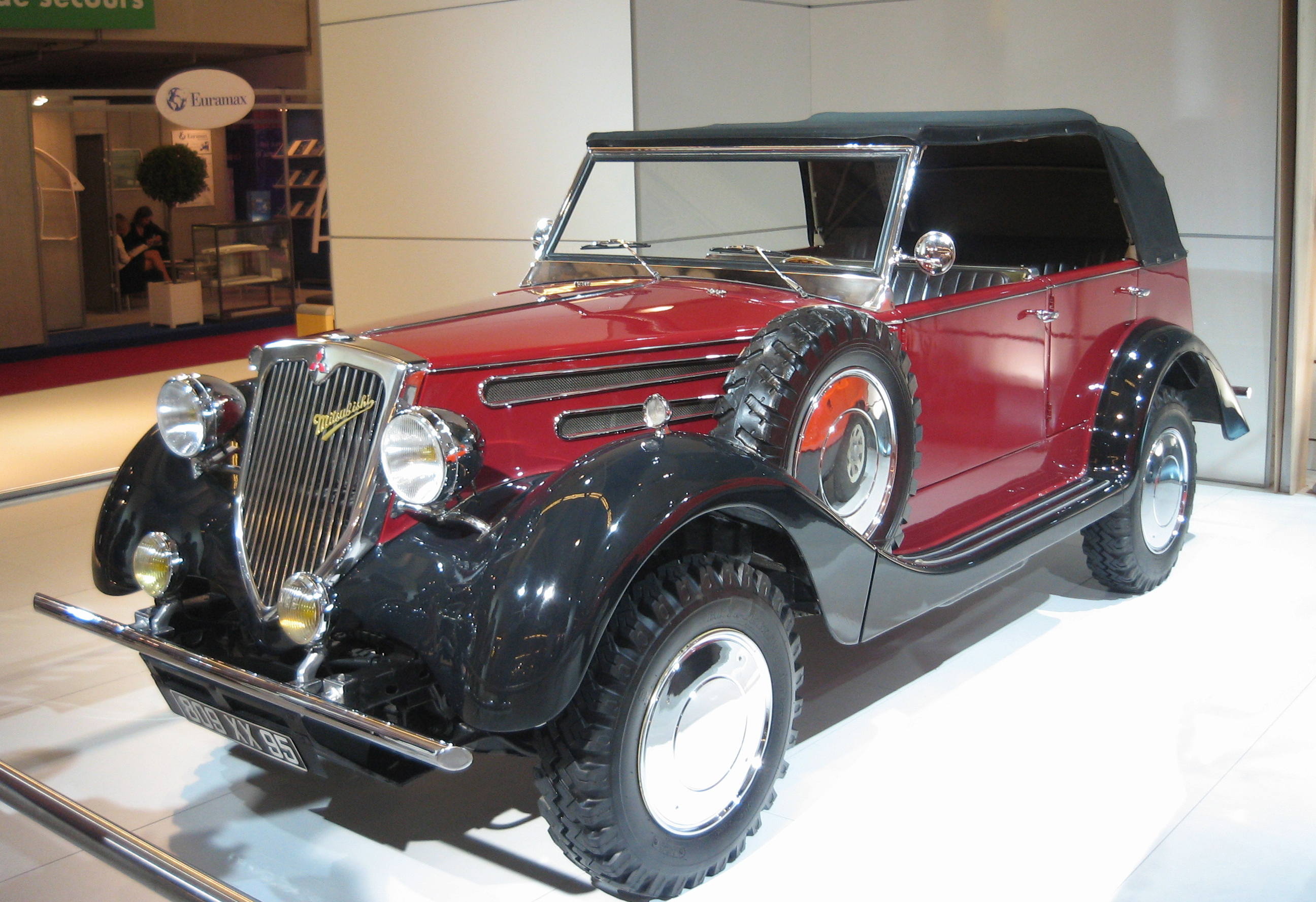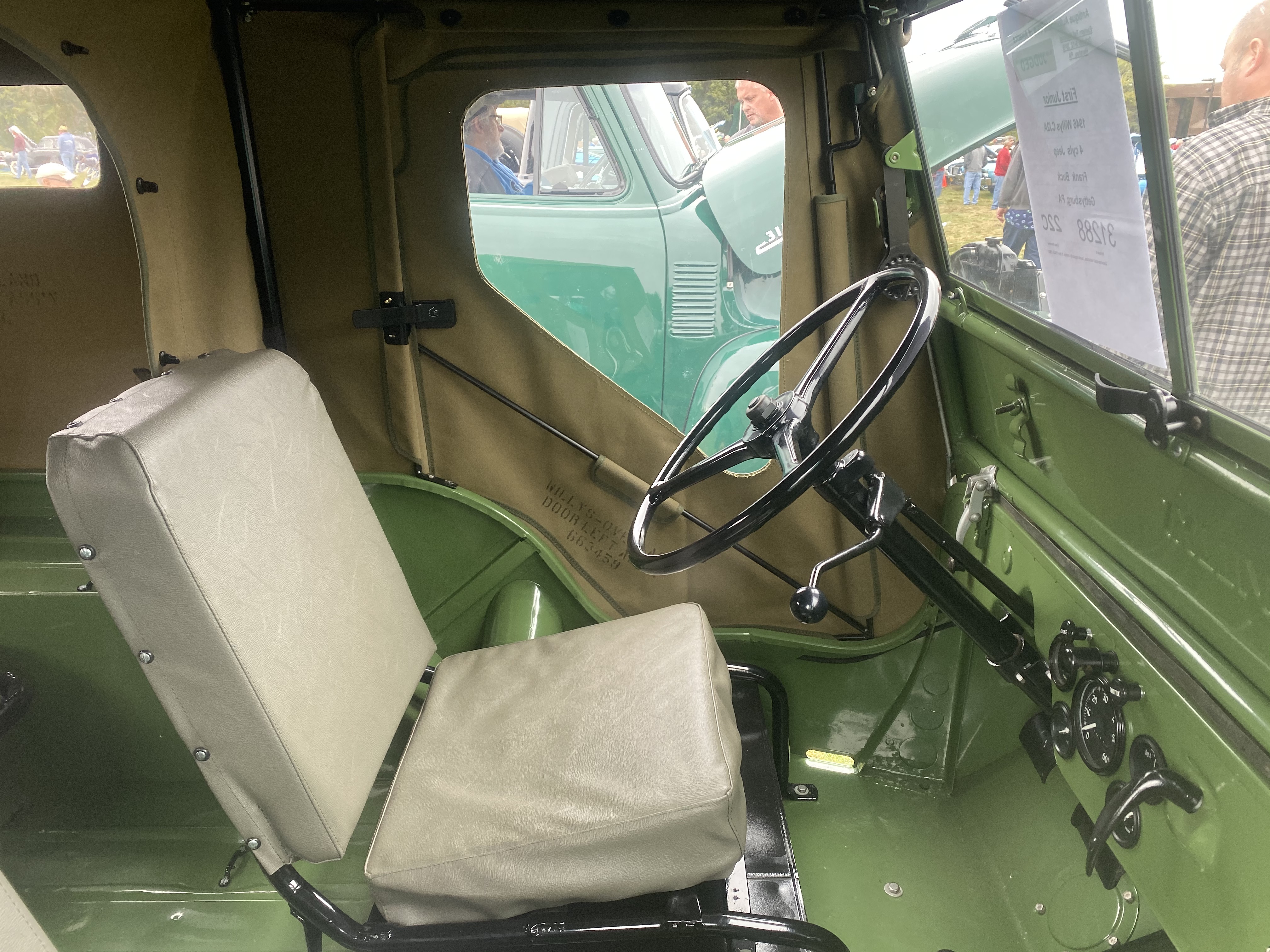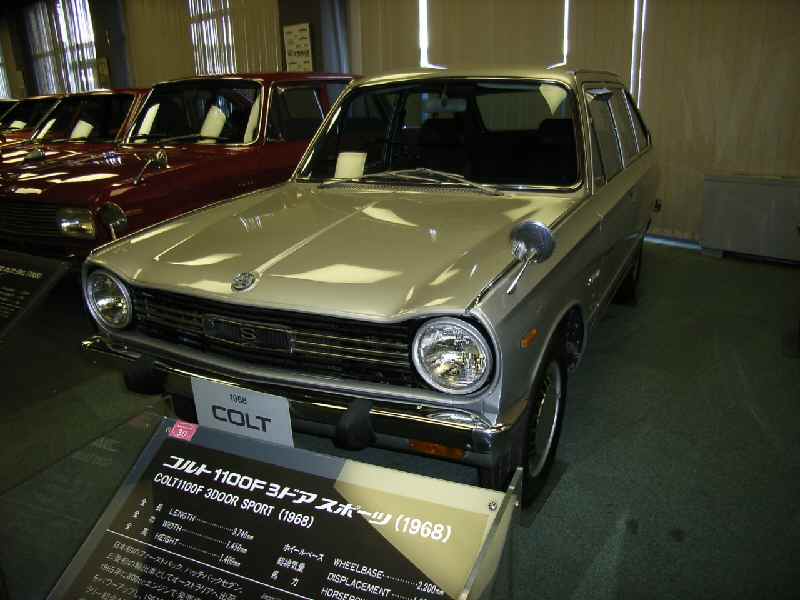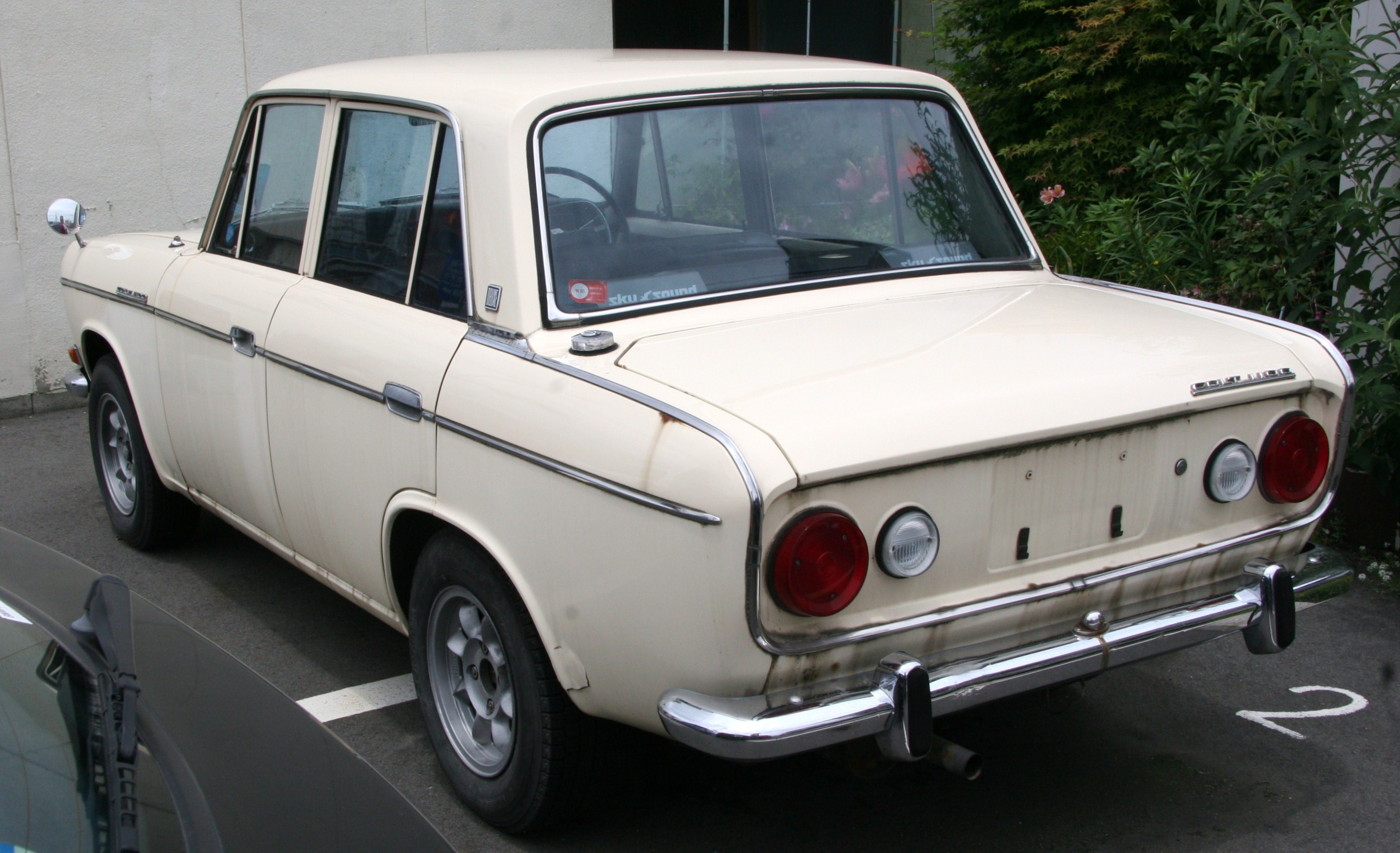|
Mitsubishi KE Engine
The Mitsubishi KE engine is a range of engines produced by Mitsubishi Motors during the 1960s and early 1970s. They were extensively used in the various Colt-branded vehicles the company produced from 1963. The engines were overhead valve iron-blocks, for gasoline and diesel use. The first digit after the ''KE'' denotes the number of cylinders, straight-4s becoming KE4 and six-cylinder versions such as the single overhead camshaft 2.0 L straight-6 which was developed in 1964 for the new Mitsubishi Debonair flagship sedan, receiving the KE6 prefix. The last digit is simply a serial, denoting which number engine it is. Some of these engines, such as the two-liter KE42, were further developed into overhead-cam engines and were named Astron. As a large scale manufacturer, Mitsubishi had a wealth of experience building engines, both gasoline and diesel, in V and straight engine block configurations during the war. One of their many examples was the air-cooled A6120VDe air-cooled ... [...More Info...] [...Related Items...] OR: [Wikipedia] [Google] [Baidu] |
Mitsubishi Motors
is a Japanese Multinational corporation, multinational Automotive industry, automobile manufacturer headquartered in Minato, Tokyo, Japan.Corporate Profile , Mitsubishi Motors website, 19 June 2008 In 2011, Mitsubishi Motors was the sixth-largest Japanese automaker and the 19th-largest worldwide by production. Since October 2016, Mitsubishi has been one-third (34%) owned by Nissan, and included in the Renault–Nissan–Mitsubishi Alliance. Besides being part of the Renault–Nissan–Mitsubishi Alliance, it is also a part of Mitsubishi Group, Mitsubishi ''keiretsu'', formerly the biggest industrial group in Japan. The company was originally formed in 1970 from the automotive division of Mitsubishi Heavy Industries. [...More Info...] [...Related Items...] OR: [Wikipedia] [Google] [Baidu] |
Sedan (car)
A sedan (American English) or saloon (British English) is a automobile, passenger car in a three-box styling, three-box configuration with separate compartments for an engine, passengers, and cargo. The first recorded use of ''sedan'' in reference to an automobile body occurred in 1912. The name derives from the 17th-century Litter (vehicle), litter known as a sedan chair, a one-person enclosed box with windows and carried by porters. Variations of the sedan style include the close-coupled sedan, club sedan, convertible sedan, fastback sedan, hardtop sedan, notchback sedan, and sedanet. Definition A sedan () is a car with a closed body (i.e., a fixed metal roof) with the engine, passengers, and cargo in separate compartments. This broad definition does not differentiate sedans from various other car body styles. Still, in practice, the typical characteristics of sedans are: * a Pillar (car), B-pillar (between the front and rear windows) that supports the roof; * two rows of s ... [...More Info...] [...Related Items...] OR: [Wikipedia] [Google] [Baidu] |
Mitsubishi Rosa
The Mitsubishi Fuso Rosa () is a Japanese minibus based on the Mitsubishi Fuso Canter manufactured by Mitsubishi Fuso Truck and Bus Corporation. The Mitsubishi Fuso Rosa was launched in 1960 and is now in its fifth generation, known as the BE7. In Japan, Asia-Pacific, Mid-East, Africa, Jamaica and South America, its principal competitors are the Isuzu Journey, Nissan Civilian, Mazda Parkway and Toyota Coaster. History The Mitsubishi Rosa was launched in 1960 by the Mitsubishi Heavy Industries (formerly China-Japan Heavy Industries) and was called Mitsubishi Rosa. In 1964, three companies merged with the Mitsubishi Heavy Industries to become a new Mitsubishi Heavy Industries, and the Mitsubishi Rosa became a Mitsubishi Fuso product to replace the Fuso MB720 minibus in 1966. First generation (1960–1973) Mitsubishi officially launched the Rosa minibus in 1960. At that time, the factory was coded as B10 and developed from the chassis of the original Mitsubishi Jupiter T10 ... [...More Info...] [...Related Items...] OR: [Wikipedia] [Google] [Baidu] |
Mitsubishi Jeep
The Jeep CJ models are a series and a range of small, open-bodied off-road vehicles and compact pickup trucks, built and sold by several successive incarnations of the Jeep automobile marque from 1945 through 1986. The 1945 Willys "Universal Jeep" was the world's first mass-produced civilian four-wheel drive car. In 1944, Willys-Overland, the primary manufacturer of the World War II military Jeep, built the first prototypes for a commercial version – the CJ, short for "civilian Jeep". The design was a direct evolution from the wartime Jeep, but the most obvious change was adding a tailgate, and relocating the spare wheel to the side. Also, besides adding basic civilian amenities and options and legally-compliant lighting, the CJ required a sturdier drivetrain than the wartime model, because the targeted rural buyers would expect years of durability, instead of mere weeks as during WWII. From then on, all CJ Jeeps consistently had a separate body and frame, rigid live axles w ... [...More Info...] [...Related Items...] OR: [Wikipedia] [Google] [Baidu] |
Mitsubishi Canter
The is a line of light-duty commercial vehicles manufactured by Mitsubishi Fuso Truck and Bus Corporation, part of Daimler Truck, subsidiary of Mercedes-Benz Group. The Canter is manufactured since 1963, now in its eighth generation. The Canter is named after the English word describing the gait of a horse, emphasising the "thoroughbred" nature of Mitsubishi trucks. In Japan, its traditional competitors are the Isuzu Elf, the Toyota Dyna and the Nissan Atlas. Production and sales Early export sales began to South East Asia only, but shortly later the series began seeing export to other markets including Australia, New Zealand, the Near East and since the mid-eighties North America. Indonesia (there named "Colt Diesel" until 2022) has become the biggest export market, followed by the Near East and Taiwan. In total the Canter is marketed to more than 150 countries. Fuso operates its own factories in Japan, Chennai/India and Tramagal/Portugal, further assemblies from CKD kits ... [...More Info...] [...Related Items...] OR: [Wikipedia] [Google] [Baidu] |
Mitsubishi Delica
The is a range of vans and pickup trucks designed and built by the Japanese automaker Mitsubishi Motors since 1968. It was originally based on a cabover van and pickup truck introduced the previous year, also called the Delica, its name a contraction of the English language phrase ''Delivery car''. This pickup truck, and a commercial van derived from it has received many names in export markets, being sold as the L300 (later L400) in Europe, Jamaica (discontinued after the third generation) and New Zealand, Express and Starwagon in Australia, and plain Mitsubishi Van and Wagon in the United States. The passenger car versions were known as Delica Star Wagon from 1979 until the 1994 introduction of the Delica Space Gear, which became simply Space Gear in Europe at least. The most recent version (not available as a commercial vehicle) is called the Delica D:5. With the exception of the first, versions of all generations are still being sold in various international markets. I ... [...More Info...] [...Related Items...] OR: [Wikipedia] [Google] [Baidu] |
Mitsubishi Colt 800
The Mitsubishi Colt 800 is the first of a series of passenger cars with a fastback/hatchback design produced by Mitsubishi Motors from November 1965. It was introduced as a two-door fastback sedan, the first such design in the Japanese market. The series was discontinued in 1971, after the introduction of the company's Galant sedan but without a real replacement. Colt 800 The 800 was powered by a three-cylinder two-stroke engine of 843 cc capacity producing . This made it more powerful than the projected competitor, Toyota's 700 cc Publica. Equipped with a four-speed manual gearbox and weighing a scant 750 kg, top speed was . While it may have looked like a hatchback, the 800 was never available with a rear hatch. However, both a coupe utility version ("ute" in Australia, where many of these were sold) and a wagon ("Van" in Japanese parlance) were marketed. The Van was clearly based on the ute, with a horizontally split rear tailgate and workmanlike interior. Mits ... [...More Info...] [...Related Items...] OR: [Wikipedia] [Google] [Baidu] |
Mitsubishi Colt 1000
The Mitsubishi Colt (A20) was one of their first series of passenger cars produced by Shin Mitsubishi Heavy-Industries, Ltd, one of the companies which would become Mitsubishi Motors. Built from 1963 until 1970, they were available in four body styles (2-dr/4-dr sedan, 2-dr van, and 4-dr wagon) and on two different wheelbases, with gradually increasing engine displacements 1000, 1100, 1200, and 1500. After a May 1968 facelift, they were marketed as the "New Colt". Along with the smaller, fastback Colts they formed the mainstay of Mitsubishi's passenger car lineup in the 1960s. With the late 1969 introduction of the new, larger Colt Galant, the outmoded Colt-series soon faded away, eventually replaced by the smaller Mitsubishi Lancer as well. The dimensions were kept small so as to provide Japanese buyers the ability to purchase a car that complied with the Japanese Government compact car dimension regulations and to keep the annual road tax obligation affordable. Colt 1000 (s ... [...More Info...] [...Related Items...] OR: [Wikipedia] [Google] [Baidu] |
Mitsubishi Fuso Canter
The is a line of light-duty commercial vehicles manufactured by Mitsubishi Fuso Truck and Bus Corporation, part of Daimler Truck, subsidiary of Mercedes-Benz Group. The Canter is manufactured since 1963, now in its eighth generation. The Canter is named after the English word describing the gait of a horse, emphasising the "thoroughbred" nature of Mitsubishi trucks. In Japan, its traditional competitors are the Isuzu Elf, the Toyota Dyna and the Nissan Atlas. Production and sales Early export sales began to South East Asia only, but shortly later the series began seeing export to other markets including Australia, New Zealand, the Near East and since the mid-eighties North America. Indonesia (there named "Colt Diesel" until 2022) has become the biggest export market, followed by the Near East and Taiwan. In total the Canter is marketed to more than 150 countries. Fuso operates its own factories in Japan, Chennai/India and Tramagal/Portugal, further assemblies from CKD k ... [...More Info...] [...Related Items...] OR: [Wikipedia] [Google] [Baidu] |
Straight-four Engine
A straight-four engine (also referred to as an inline-four engine) is a four-cylinder Reciprocating engine, piston engine where cylinders are arranged in a line along a common crankshaft. The majority of automotive four-cylinder engines use a straight-four layout (with the exceptions of the flat-four engines produced by Subaru and Porsche) and the layout is also very common in motorcycles and other machinery. Therefore the term "four-cylinder engine" is usually synonymous with straight-four engines. When a straight-four engine is installed at an inclined angle (instead of with the cylinders oriented vertically), it is sometimes called a Slant-4 engine, slant-four. Between 2005 and 2008, the proportion of new vehicles sold in the United States with four-cylinder engines rose from 30% to 47%. By the 2020 model year, the share for light-duty vehicles had risen to 59%. Design A four-stroke straight-four engine always has a cylinder on its power stroke, unlike engines with fewer ... [...More Info...] [...Related Items...] OR: [Wikipedia] [Google] [Baidu] |
Mitsubishi MCA
Mitsubishi MCA stands for Mitsubishi Clean Air, a moniker used in Japan to identify vehicles built with emission control technology. The term was first introduced in Japan, with later introductions internationally. The technology first appeared in January 1973 on the Mitsubishi 4G32A gasoline-powered inline four cylinder engine installed in all Mitsubishi vehicles using the 4G32 engine, and the Saturn-6 6G34 six-cylinder gasoline-powered engine installed in the Mitsubishi Debonair. The technology was installed so that their vehicles would be in compliance with Japanese Government emission regulations passed in 1968. Emission reducing technology began with the installation of a positive crankcase ventilation (PCV) valve (MCA-I), followed by the addition of a thermo reactor air pump and catalytic converter in addition to an exhaust gas recirculation (EGR) valve (MCA-II) and a solenoid controlled automatic choke installed on the carburetor. The MCA-Jet system has a small third ... [...More Info...] [...Related Items...] OR: [Wikipedia] [Google] [Baidu] |
Mitsubishi Fuso Truck And Bus Corporation
The is a Japanese manufacturer of trucks and buses. It is headquartered in Kawasaki, Kanagawa and owned by Germany-based Daimler Truck.Next Stop: Fuso Aero Star Eco Hybrid . ''Fuso'' derives from the ancient Chinese term '' fusang'' (), for a sacred tree said to grow at the spot in the east where the sun rises, and has been used to refer to Japan itself. The actual fuso tree is a . History Mitsubishi Heavy Industries. In ...[...More Info...] [...Related Items...] OR: [Wikipedia] [Google] [Baidu] |







